Ever tried making pizza at home and ended up with something that just wasn’t right? Yeah, me too.
I’ve been there, staring at a pizza that’s somehow both soggy and raw. It’s frustrating, especially when you’re hungry and all you want is that perfect slice.
But I’ve learned a lot on my pizza-making journey, like how to spot when it’s undercooked and what to do about it.
So, let’s dive into this together and turn those pizza mishaps into delicious successes.
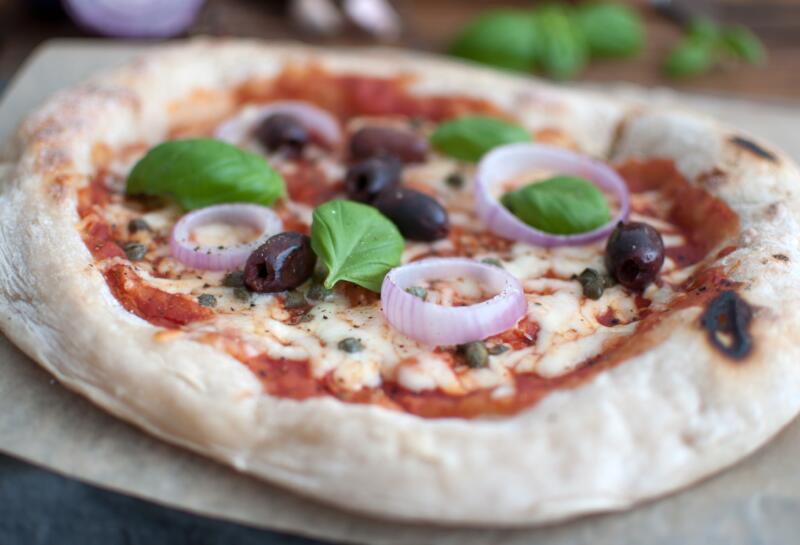
Highlights
- Spotting the Signs: I’ve learned to look for a pale crust and doughy texture as clear signs my pizza needs more oven time. It’s all about that golden brown color and crispy bite.
- Avoiding the Pitfalls: I’ve found that cranking up the oven temperature and not overcrowding my pizza with toppings helps avoid undercooking. It’s a balance between heat, time, and topping quantity.
- Quick Fixes: If I pull out a pizza too soon, I don’t panic. I just pop it back in the oven for a bit longer, making sure not to overdo it. Sometimes, a little more patience is all it takes.
In this article:
How to Identify
Identifying undercooked pizza is relatively straightforward once you know what to look for.
Undercooked pizza, as the name suggests, is pizza that hasn’t been baked long enough. It’s a common issue that can turn a delicious meal into a disappointing one.
But what exactly does undercooked pizza look like, and why is it a problem?
1. Color
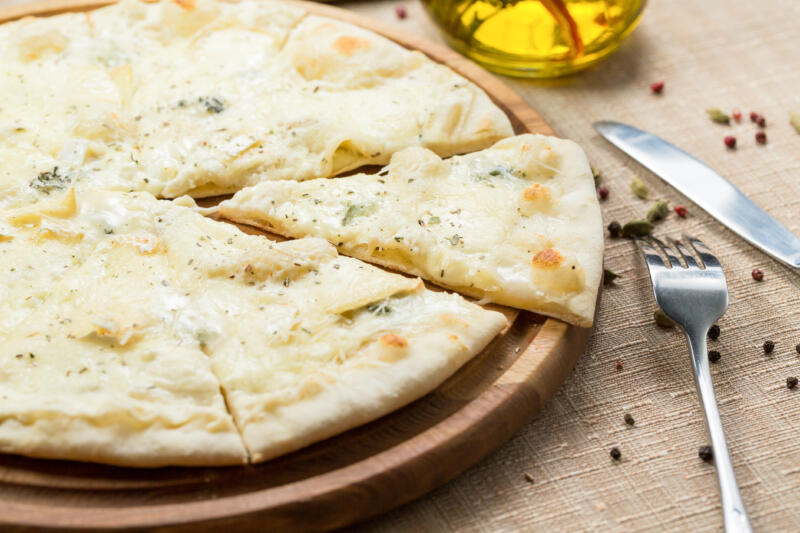
Undercooked pizza often has a pale, almost white crust rather than the golden brown color that we associate with a perfectly baked pizza.
A well-baked pizza should sport a crust with a golden-brown hue. If the crust is pale or white, it’s likely undercooked.
This lack of browning is a clear sign that the dough hasn’t reached the right temperature to trigger the Maillard reaction, which is responsible for that beautiful, appetizing golden brown hue.
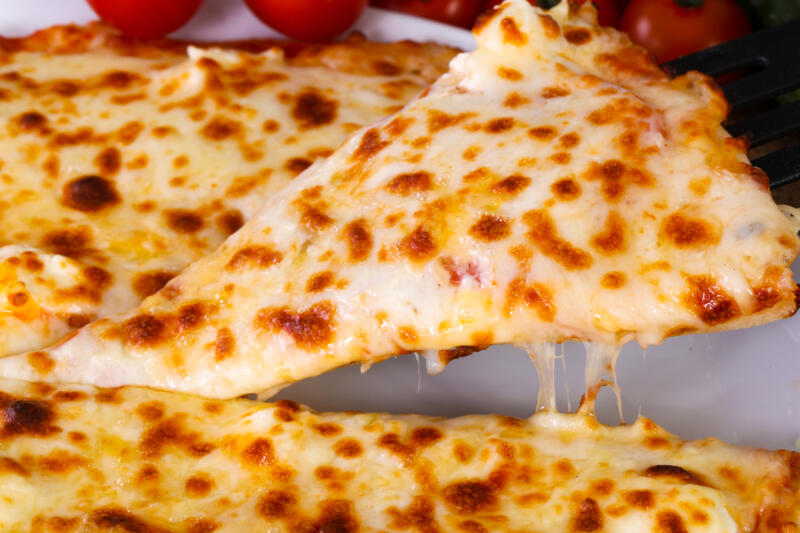
2. Toppings
Uncooked toppings can also indicate undercooked pizza. If the cheese isn’t fully melted or the toppings aren’t cooked to your liking, the pizza probably needs more time in the oven.
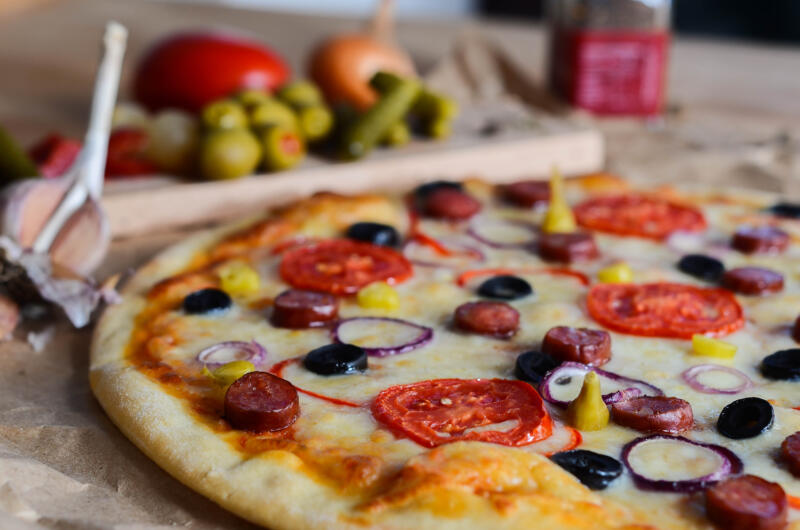
3. Texture
The first sign is a doughy texture. If the crust is dense and chewy rather than light and fluffy, it’s likely undercooked.
This is due to the moisture in the dough not having enough time to evaporate and create those lovely air pockets we love in a well-cooked pizza crust.
Using a pizza stone or baking steel can also help you check the doneness of your pizza.
These tools conduct heat efficiently, helping to cook the pizza evenly and giving you a better chance of achieving a perfectly cooked crust.
4. Taste
Taste-wise, undercooked pizza has a raw flour flavor rather than the toasty, slightly sweet taste of properly cooked dough. This is because the flour hasn’t had a chance to fully cook and develop its flavors.
Risk of Eating Undercooked Pizza
Beyond the aspects of taste and texture, there are potential health risks associated with eating undercooked pizza.
The raw dough can harbor bacteria that lead to food poisoning, resulting in symptoms like stomach ache and more severe digestive issues.
Furthermore, consuming undercooked pizza can impact your body’s digestive process.
The dough, when not fully cooked, is harder for your body to break down, leading to prolonged digestion.
This extended digestion process might cause you to feel full for longer periods and can increase your water intake as your body works harder to process the raw ingredients.
So, while a slightly undercooked pizza might seem harmless or even appealing to some, it’s important to consider these potential effects on your health and digestion.
Causes
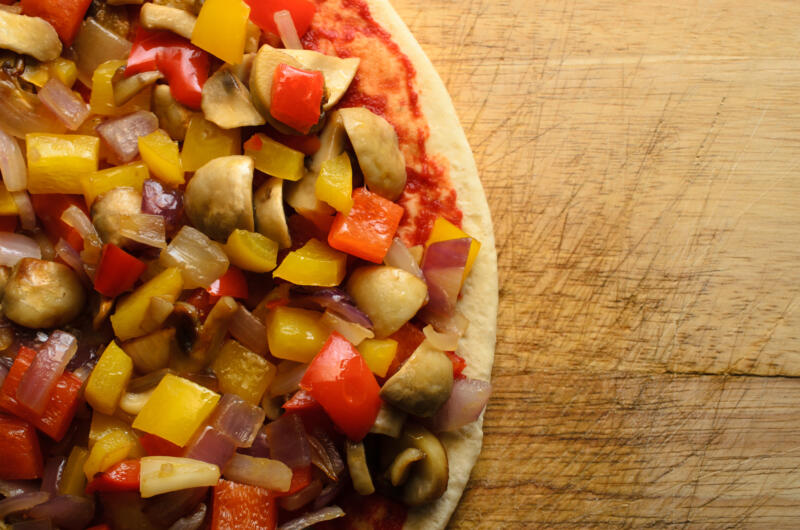
Multiple reasons can contribute to pizza dough being undercooked:
1. Low Baking Temperature
One of the most common reasons of undercooked pizza is a low baking temperature.
Pizza needs a high temperature to cook properly, and if your oven isn’t hot enough, the dough won’t fully cook.
Generally, the recommended temperature for baking pizza is between 450 and 500 degrees Fahrenheit or 230-260C.
This high heat ensures a crispy crust and well-cooked toppings.
However, the exact temperature can vary depending on the type of oven and the thickness of your pizza.
For instance, a thin crust pizza might cook well at the higher end of this range, while a thicker crust might need a slightly lower temperature to cook through without burning.
Make sure to preheat your oven before baking to ensure it reaches the desired temperature for optimal results.
Remember, the key to a perfect pizza is a balance between a well-cooked crust and perfectly melted cheese and toppings.
2. Short Baking Time
Similarly, a short baking time can result in undercooked pizza. Even if your oven is hot enough, the pizza needs enough time for the heat to penetrate the dough and cook it thoroughly.
3. Thick Crust
A thick crust takes longer to cook than a thin one, and if you’re not adjusting your cooking time accordingly, you could end up with a raw center.
4. Too Many Toppings
Too many toppings can prevent the heat from reaching the dough, leaving it undercooked.
5. Cold Dough
Using cold dough can result in a longer cooking time, as the dough needs to warm up before it can start to cook.
6. Wet Ingredients
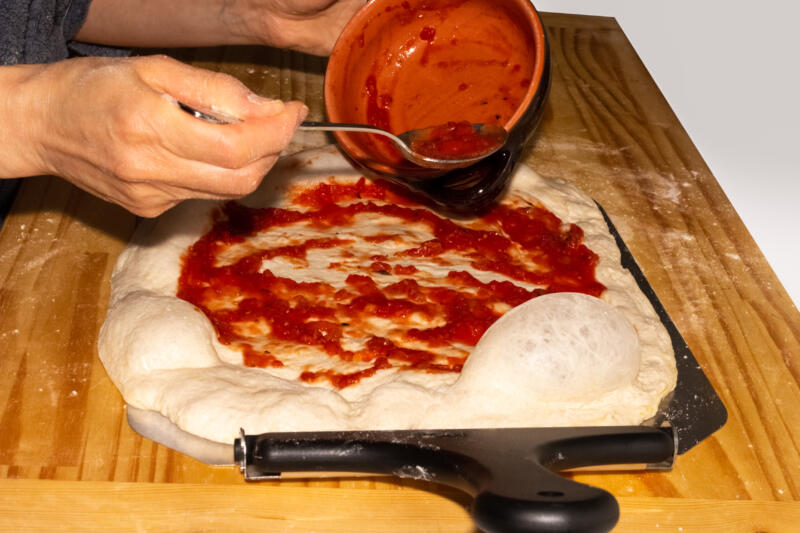
Finally, wet ingredients, like pizza sauce, can make the pizza soggy and prevent the dough from cooking properly.
It’s important to strike a balance between enough sauce to add flavor but not so much that it makes the pizza wet and soggy.
Additionally, when using fresh vegetables or mushrooms as toppings, it’s crucial to consider their water content.
These ingredients can release moisture as they cook, potentially adding to the sogginess of the pizza.
To mitigate this, you can lightly sauté or grill these ingredients before adding them to your pizza, helping to reduce their moisture content.
Alternatively, thinly slicing these toppings can also minimize the amount of water they release during cooking.
How to Avoid Undercooked Pizza
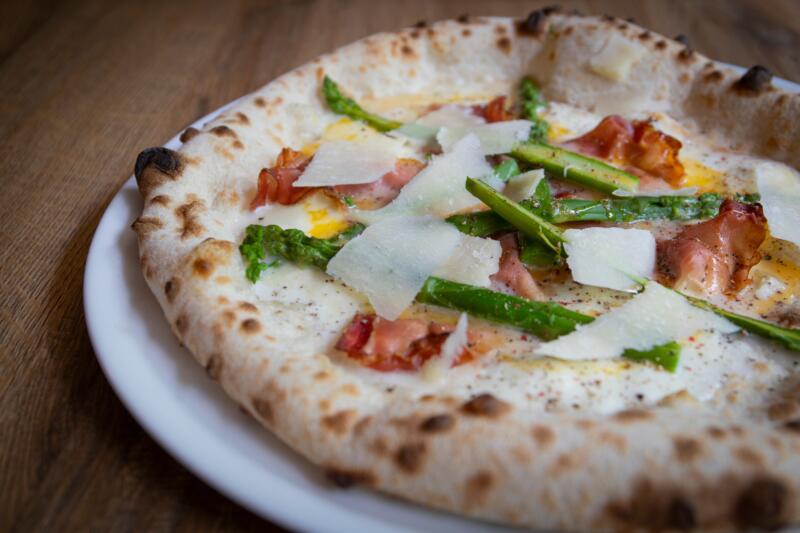
Nobody wants to bite into a slice of pizza only to find a doughy, undercooked mess.
Fortunately, with a few tips and tricks, you can ensure your homemade pizza is perfectly cooked every time. Let’s explore some of the key factors in avoiding undercooked pizza.
Temperature Control
One of the most crucial aspects of cooking pizza is temperature control. The oven temperature and rack placement can significantly impact the cooking process.
To achieve an evenly cooked pizza with a golden brown crust, you need to adjust these variables carefully.
A common mistake is using a high oven temperature without sufficient heat on the bottom. This can lead to a pizza that’s cooked on top but still raw on the bottom.
To prevent this, consider setting your pizza on the bottommost shelf of a heated oven. This allows the bottom of the pizza to cook faster, ensuring a fully cooked crust.
Remember, every oven is different, so you might need to experiment with temperature and cooking time to find what works best for your specific oven.
Proper Dough Thickness and Topping Distribution
The thickness of your pizza dough and how you distribute your toppings can also affect how well your pizza cooks.
A pizza with a thick crust or heavy toppings may need more time to cook, while a thin-crust pizza with light toppings will cook more quickly.
When you roll out your pizza dough, aim for a consistent thickness. This approach will aid in achieving even baking.
Similarly, when adding toppings, try to distribute them evenly across the pizza. This will prevent certain areas from cooking faster than others and help ensure a uniformly cooked pizza.
Using the Right Equipment
The equipment you use to cook your pizza can also make a big difference.
Keep in mind that a pizza stone or baking steel are the top choices. They not only guarantee uniform heat distribution but also play a significant role in achieving that crispy crust.
A pizza peel can also be a useful tool for easily transferring your pizza in and out of the oven.
If you don’t have a pizza stone or steel, a baking sheet can be a good alternative.
Just remember to preheat it in the oven before adding your pizza!
How to Fix
So, you’ve taken your pizza out of the oven only to find it’s undercooked. Don’t despair!
One of the simplest methods to fix it is to return it to a preheated oven.
If you have a pizza stone, even better. The stone will help distribute the heat evenly, ensuring your pizza cooks properly.
However, be careful not to overcompensate by cranking up the heat or leaving the pizza in the oven for too long.
This can result in a burnt crust, which is just as disappointing as undercooked pizza.
It’s better to cook the pizza at the correct temperature for a little longer than to try and speed up the process with excessive heat.
Different Types of Pizza and Their Cooking Requirements
The type of pizza you’re making can significantly affect the cooking time and temperature.
For example, a thin crust pizza will cook much faster than a deep-dish pizza.
Similarly, a pizza loaded with toppings will take longer to cook than a simple Margherita.
Different ingredients can also impact the cooking process. For instance, fresh vegetables release moisture as they cook, which can make the pizza soggy if not properly managed.
On the other hand, cured meats like pepperoni can make the pizza greasy if too much is used.
Understanding these factors and adjusting your cooking time and temperature accordingly can help ensure a perfectly cooked pizza, no matter what style or toppings you choose.
Closing Thoughts
Mastering the art of pizza-making might not happen with your first pizza.
While the initial tries might fall short of perfection, each one offers invaluable lessons.
With persistence and the insights from this guide, you’ll soon be crafting pizzas that not only satisfy the taste buds but also warm the heart.
Remember, every great pizza chef started with a dough and a dream.
Keep baking, keep learning, and soon, perfection will be yours to savor.
And if you have any questions or comments, or if you want to share your own pizza-making experiences, feel free to drop a comment below.